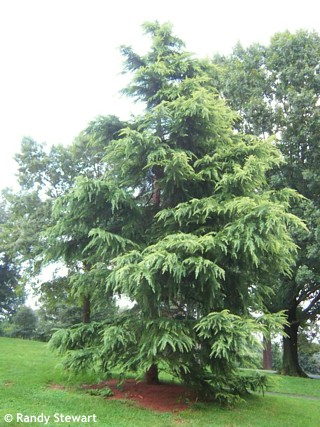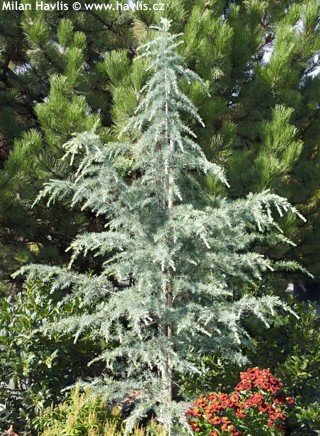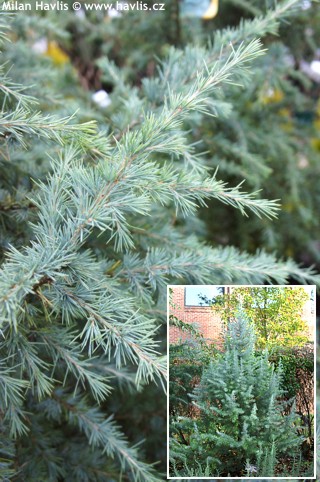
Cedrus deodara 'KARL FUCHS' Himalayan cedar
size/type
tall tree,tall tree
usual height
12-18m
usual width
5-6m
leaves
evergreen conifer
colour of leaves
flowers
insignificant or non-blooming
location
full sun
USDA zone (lowest)
5b (down to -27°C)
winter protection
for zone 5+6

for zone 7

categorized
Cedrus
Cedars are beautiful, architectural trees that attract us with their irregular, monumental crowns, mainly in southern Europe under the Alps. There are 4 species in this genus among which the hardiest are Atlas cedar (blue-green) and cedar of Lebanon (green).Deodar – Himalayan cedar is the most graceful of all cedars. It has strictly pyramidal habit when young, spreading branching and weeping ends. The needles are short, mid green, borne in whorls of 20-30. Female cones appear in summer. Older plants form unique shapes.
Description of the plant:
Karl Fuchs is quite a recent selection of deodar / Himalayan cedar. Its seeds were collected in cold parts of high mountains of Afghanistan. The plants are much hardier than the species and also offer two other significant features: the needles are striking blue when young which is not common for many Himalayan cedars; and it has much narrower habit which will help it fit a mid-sized garden, too.Grow cedars in full sun, almost any well-drained soil. They are lime tolerant. Himalayan cedars usually need a location sheltered from severe, drying winds in winter, but Karl Fuchs is tolerant of exposed locations and has withstood frost of -27°C (USDA zone 5b).
Last update 04-01-2009; 07-02-2017
QUICK PRICE OVERVIEW
CURRENTLY SOLD OUT
WANT TO TRY A SIMILAR PLANT?















